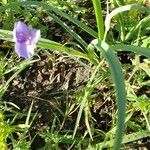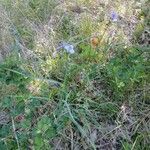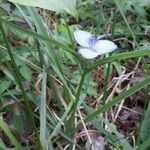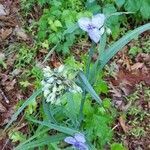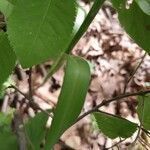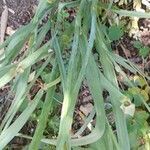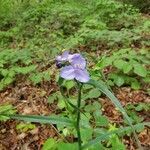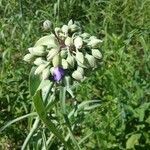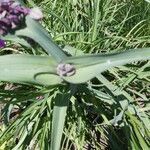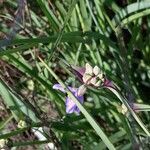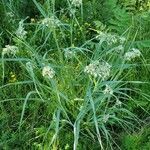Stem slender, straight or nearly so, often branched, 4–10 dm, glabrous and glaucous; lvs narrowly linear, flat, firm, glabrous, glaucous, usually under 1 cm wide, conspicuously dilated into a sheath; cymes solitary, terminating the stem and branches; pedicels 7–25 cm, glabrous; sep glaucous, 8–12 mm, often red-margined, glabrous throughout or occasionally minutely pilose with eglandular hairs at the tip; pet blue or rose (white), 1–2 cm; 2n=12, 24. Meadows, thickets, and prairies; Mass. to Minn., s. to Fla. and Tex., commonest in the Middle West. (T. barbata; T. canaliculata; T. reflexa)
A creeping herb.
